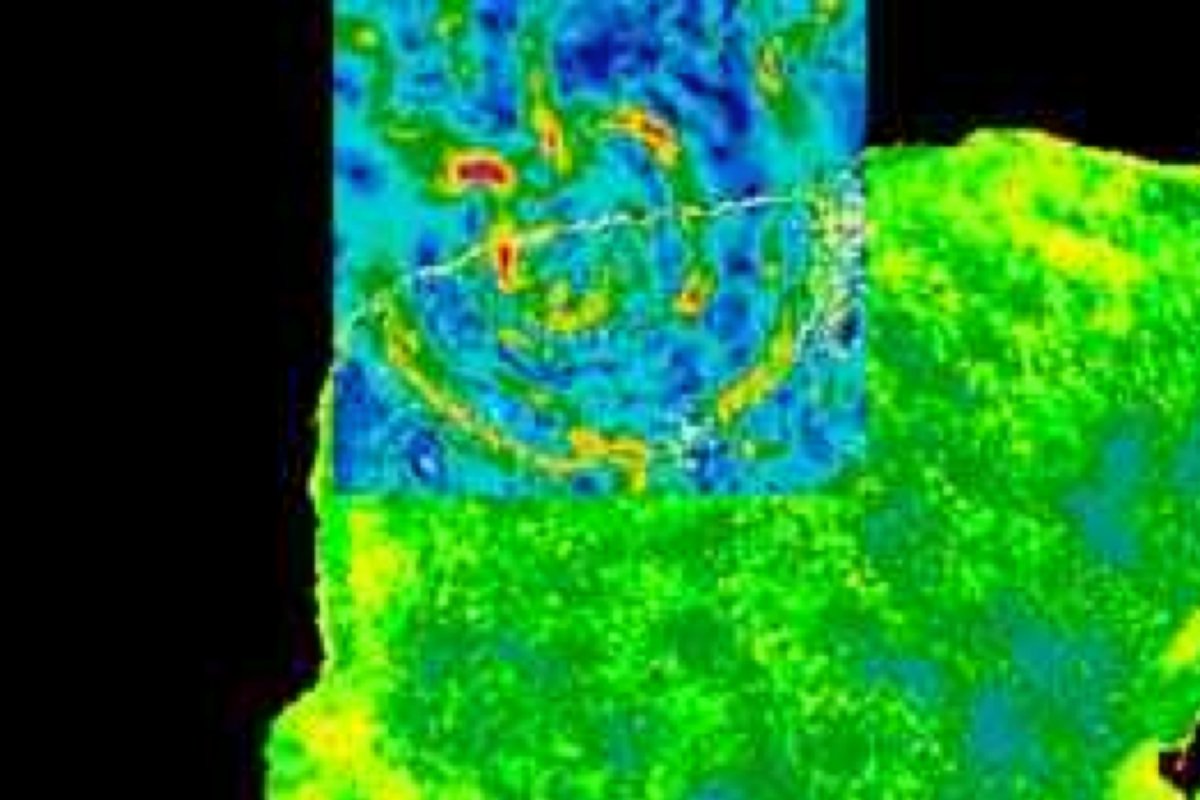The conundrum of why geophysicists can't seem to find craters from asteroid impacts older than 2 billion years may have now been solved.
The lack of old craters may in fact be due to the billions of years of erosion having ground them all away nearly completely, new research in the Journal of Geophysical Research Planets has found.
This, therefore, makes it much harder for scientists to fully understand the role that asteroid impacts had on the early Earth.
"Our research is specifically examining the ability of researchers to discover craters on Earth," Matthew Huber, a planetary scientist at the University of the Western Cape in South Africa, and co-author of the paper, told Newsweek.

When an impact event occurs, an object strikes the surface of the earth and creates a disruption of the crust from the top down. The depth of this crater depends on how big the impactor or asteroid is. Previous research had suggested that the effects of even the largest asteroid impacts would be limited to the upper 10 km [6.2 miles] of the crust.
"Once the crater forms, it will immediately start being destroyed by erosion. As the crust erodes down, the evidence of the impact is eroded away as well. So, we wanted to know what we could search for if a crater had been eroded by 10 km," Huber said.
The researchers describe in the paper how they studied the Vredefort crater in South Africa, one of the world's oldest known impact craters, measuring around 186 miles across. Estimated to be around 2 billion years old, the scientists wanted to investigate if this crater, which has experienced between 8 and 10 km of erosion, still had signatures of the impact in the underground rock.
"We went to the Vredefort impact structure, which is the remnant of the largest impact structure on Earth, because it has experienced 8-10 km of erosion," Huber said. "We checked the rocks to see if they had geophysical characteristics the same as or different from rocks that had not experienced an impact event. We found out that the rocks are indistinguishable from those that have not been shocked."

This essentially means that if there is a crater that has eroded by more than 10 km, scientists will not be able to detect it using geophysical techniques.
"The older a crater is, the more likely it is to have experienced erosion. We used the average erosion rate over a long period of time to estimate how long it would take to achieve 10 km of erosion and found that around 2 billion years is the limit. Older than that, it is likely that any crater would have eroded below its detection limit," Huber said. "So, old impact craters may exist somewhere on Earth, but without any guide to point in their direction, they are effectively impossible to find."
In the early, turbulent solar system, there were frequent collisions with asteroids, with Mars, Mercury, and the moon all possessing craters dating back up to 4 billion years. This is because they do not have the same eroding properties that the Earth does.

"Many of the large craters on the moon are older than the oldest rocks on Earth. The other rocky planets (excepting Venus) do not have processes occurring on their surfaces that wipe out old craters, and so they tend to preserve these old craters much better than Earth, where we have erosion and plate tectonics," Huber said.
The researchers also observed that Vredefort was very similar to the Chicxulub impact crater, which is the mark of the dinosaur-killing asteroid's impact around 66 million years ago.
"We found that they are structurally very similar, and that Vredefort looks very much like if Chicxulub were eroded by about 9 km," Huber said. "Vredefort is probably maximally eroded, meaning that if it were eroded by another km or two, it would likely be undetectable. This could happen in as little as 20 million years."

However, older craters may be detectable using other means: examining the materials thrown out of the crater during an impact.
"We do have layers of the material that was blasted out by the impacts, called the impact ejecta. Right now, we know of 20 layers of impact ejecta that are older than the oldest craters. We can learn something by studying these layers, but we could learn much more if we could find the craters that they originated from," Huber said.
"There may still be evidence in the form of small structures in minerals formed from the impact that would prove that an impact took place, but these have to be checked with a microscope. Without a geophysical guide to search an area for an anomaly, it is highly unlikely that anyone would make that sort of test."
Otherwise, the researchers state in the paper that the only chance of finding older craters is by looking in areas with unusually low levels of erosion.
Do you have a tip on a science story that Newsweek should be covering? Do you have a question about asteroid impact craters? Let us know via science@newsweek.com.
Uncommon Knowledge
Newsweek is committed to challenging conventional wisdom and finding connections in the search for common ground.
Newsweek is committed to challenging conventional wisdom and finding connections in the search for common ground.
About the writer
Jess Thomson is a Newsweek Science Reporter based in London UK. Her focus is reporting on science, technology and healthcare. ... Read more
To read how Newsweek uses AI as a newsroom tool, Click here.








